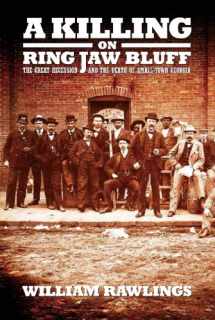
Killing on Ring Jaw Bluff
Book details
Summary
Description
A KILLING ON RING JAW BLUFF recounts the rise and fall of Georgia s rural population as told through the story of Charles Graves Rawlings. His life followed that of cotton-based agriculture after the Civil War and along with it the rise and fall of Georgia's small towns. From modest beginnings as a liveryman, he acquired nearly 40,000 acres of land, as well as a bank, a railroad, and diverse other businesses. By 1920, he was one of the state s wealthier men, with a loving wife and family, and powerful political connections. Five years later he was facing a sentence of life in prison for his role in the alleged murder of his first cousin, Gus Tarbutton. The growth of wealth in rural Georgia during the first two decades of the twentieth century was dramatic, as was the economic crash that accompanied and followed the so-called Great Recession of 1920-21. While the rest of the nation recovered rapidly, transitioning to the era of the Roaring Twenties, the rural South remained mired in social and financial despair. The forces that led to this economic whipsaw were multiple, including the loosening of credit and inflation that accompanied and followed World War I, the effective monetization of cotton as a commodity, the competition for labor from the industrialized North, and the bubble in cotton prices that burst in 1920. Although the boll weevil arrived in the state in 1915, it was only in 1921 that the pest began to severely affect the cotton crop. By then other economic forces were in play, relegating the role of the weevil to that of delivering a final blow to an already moribund economy. This is the story of rural Georgia that foreshadowed our own day, our own story.


We would LOVE it if you could help us and other readers by reviewing the book
Book review




